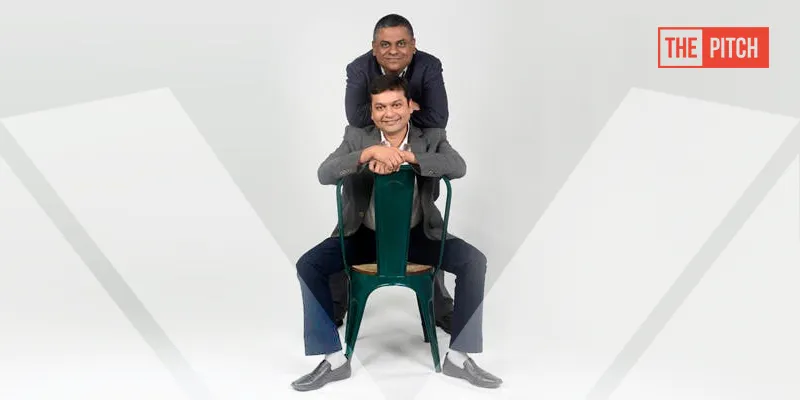The winning pitch: How the ‘men with a plan’ raised $198 million for Pepperfry
Pepperfry’s founders, who signed their first terms sheet with their investors at a pub in Mumbai, speak about how to make an investment pitch: what to say and what not to say.

When Ashish Shah and Ambareesh Murthy went for their first investment pitch at Norwest Venture Partners (NVP) in mid-2011, all they had was a plan. The idea of an online furniture marketplace was unheard of at the time. Ashish and Ambareesh did not even have a website or proof of concept for their idea, which was to become Pepperfry, now India’s market leader in the online furniture segment.
Ambareesh and Ashish, both ex-Ebay executives, were connected to Niren Shah, NVP’s India MD, who was earlier in charge of Ebay’s worldwide strategy.
“We had heard of him while at Ebay; common friends connected us. For the pitch, we went with just a PowerPoint presentation. Niren called us ‘men with a plan’,” Ambareesh recollects.
Soon, the duo formed Norwest terms sheet at the Dublin Pub at ITC Grand Central in Mumbai. In their first office, Pepperfry named a meeting room Dublin in memory of this beginning.
Talking to YourStory about the initial days for his startup, Ambareesh says, “In mid-2011, raising money was comparatively easy. We were lucky; we never faced rejection. All conversations (with investors) materialised into investment.”
Pepperfry has raised $198 million from six rounds. Ambareesh elaborated to YourStory on how they hit the jackpot with investors.
Highlights of their pitch
Pepperfry highlights these four metrics in their presentations to investors:
- GMV: it shows the sales and growth
- Contribution margin: breakeven possibility increases with higher contribution margin
- Overhead cost: the aim is to spend on growth and reduce overhead costs as the business evolves
- EBIDTA
Pepperfry shifted from being a marketplace for lifestyle (including fashion) in 2012 to furniture-only in 2013. “Even then, we had a great variety of more than 5,000 pieces in furniture. We always highlighted the variety in our products (to investors). We serve first-time house owners as well as offer high-end brands,” Ambareesh adds.
In 2012, at the pitch for investment from Bertelsmann India Investments, Ambareesh highlighted their supply chain and private label portfolio, which they had built themselves. He claims that Bertelsmann was convinced about the investment after their first presentation itself.
Towards the end of 2014, Pepperfry opened its first studio. So in 2015, during the Series D pitch, the team highlighted their omni-channel network.
In the most recent pitch – one that got them Rs 250 crore – the duo talked about 25 percent contribution margins on the product side (excluding discounts, operating costs, payment gateway costs etc.)
“In two years, it will be closer to 35 percent, according to our projection, out of which 4-5 percent will come from margin expansion (product margin and gross margin), and 2-3 percent from economies of scale in supply chain. Our supply chain investment has grown. Earlier, 19 percent of GMV was taken up by supply chain; it has become 13 percent in one year. We will bring it below 10 percent in the next couple of years,” he says.
What not to say
Not that the online furniture sector is a crowded one, but Pepperfry keeps a balance between themselves and the rest of the market in their investment pitch.
Ambareesh explains, “In our presentation, we use information available in the public domain about our competition. But we focus more on what we do well, rather than what competitors do, and about our market share versus theirs.”
Often, startups compare the Indian market to that of the US, Europe, and China. In their investment pitches, Pepperfry also does foreign market comparisons. But with a difference.
Ambareesh elaborates. “We focus on how the Indian market is evolving. Market conditions differ across various geographies. It is important to give the context of where India is. We do not do comparison with players in each market, because we are a one-of-a-kind business. Even when we started we knew there was no business to copy from.”
Choosing investors
Pepperfry’s investors include NVP, Bertelsmann, Zodius Capital, Goldman Sachs, and State Street Global Investors. But Ambareesh says they have said “no” to quite a few investors who approached them.
“This happened because they don’t know much about the industry and the product-market fit. There is a limit to the money we should have,” he stresses, adding that Pepperfry has enough money now to go till profitability and beyond.
While raising Series D in 2015, the team had planned for $50-70 million. But they got $100 million instead, at great valuation, says Ambareesh. “It shows that the investors like you, and want a higher stake to be more involved in the company,” he says.
The most recent funding, of Rs 250 crore, was done after the team charted out a business plan for the next five years. “We could estimate the money we needed for a milestone like profitability; we added a safety factor too as things can change in the ecosystem. We plan to be EBIDTA positive in 12-18 months,” Ambareesh concludes.







